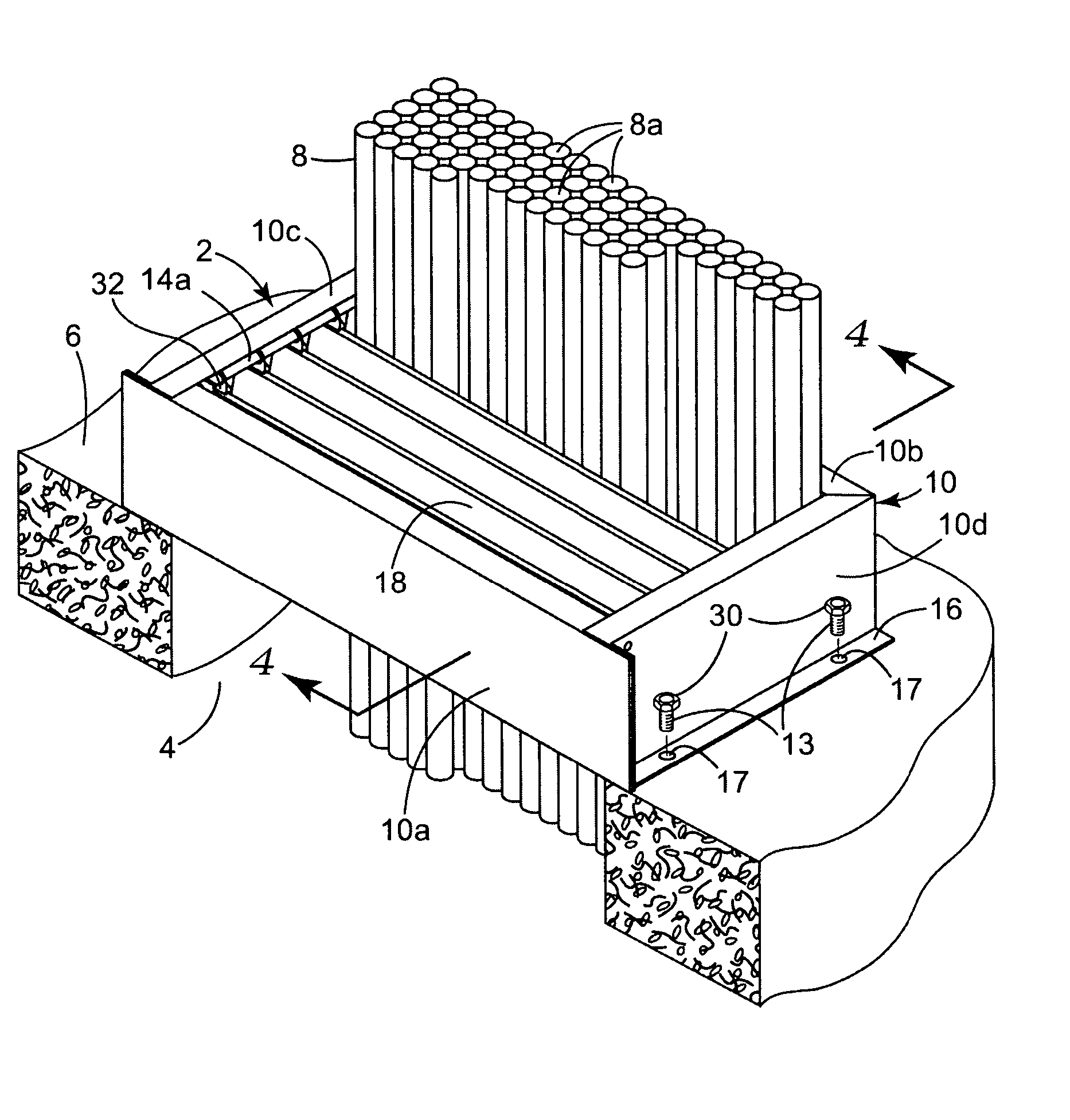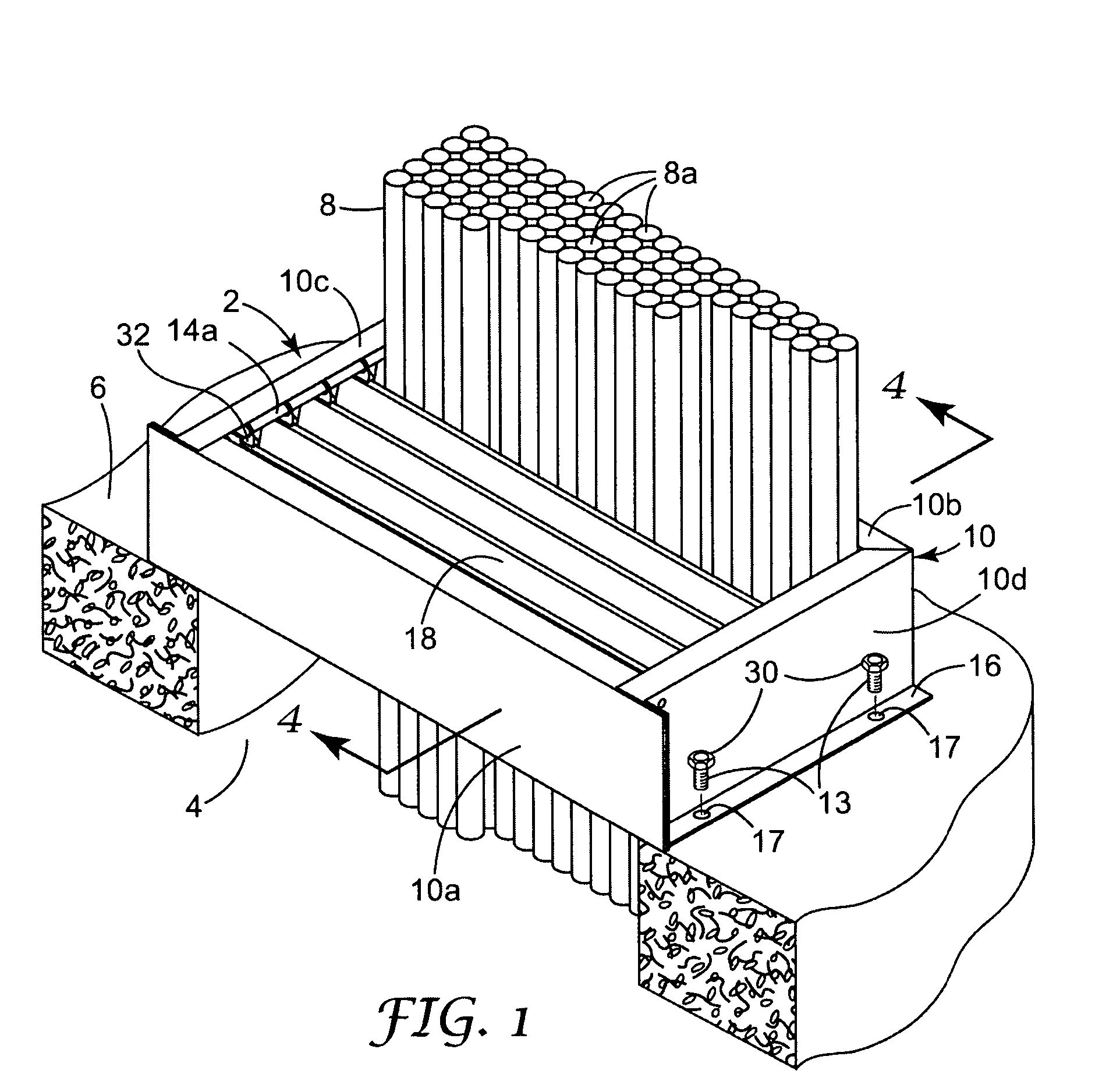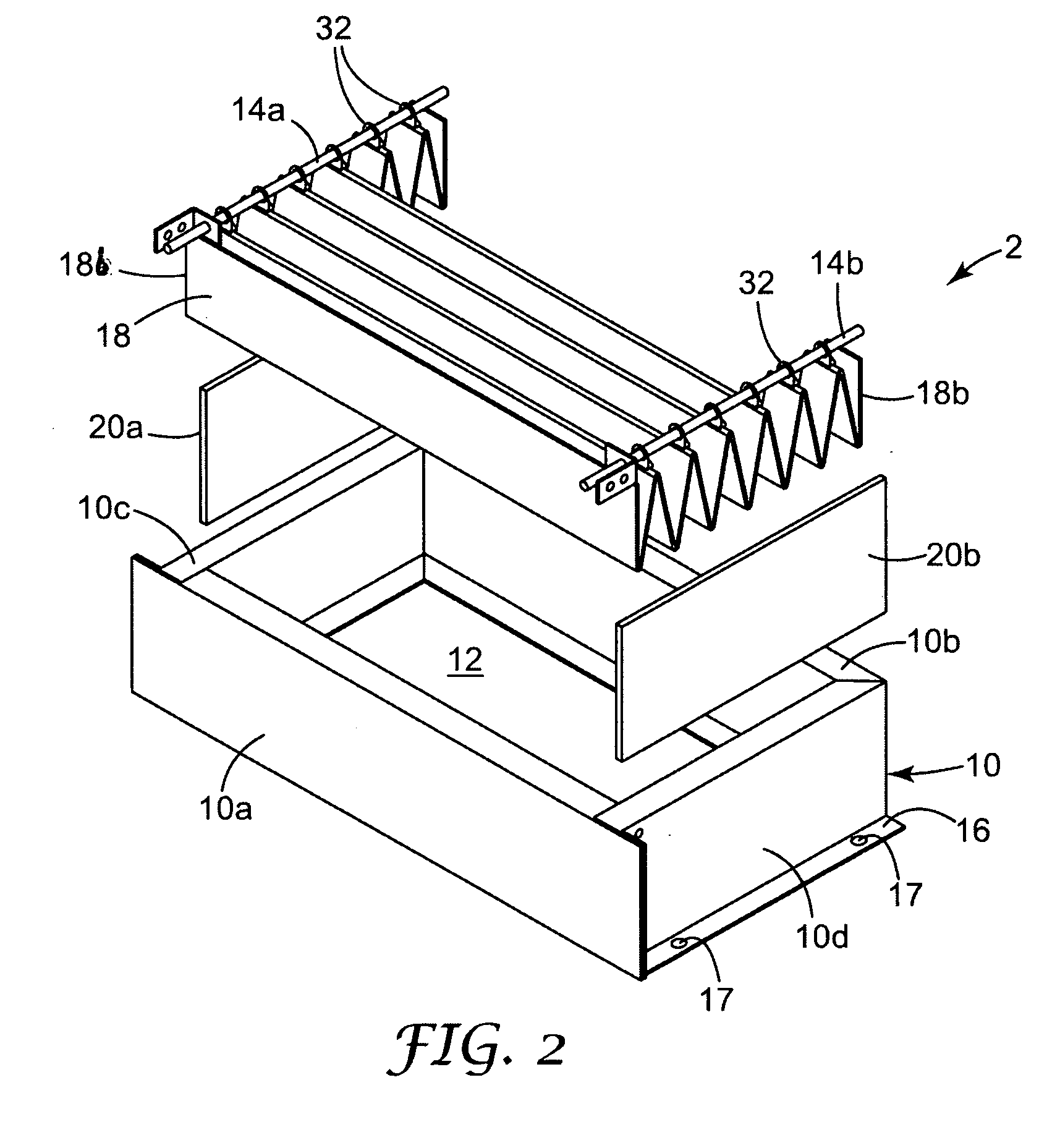Method and apparatus for firestopping a through-penetration
a technology of firestopping and through-penetration, applied in the field of firestopping, can solve the problems of omission of essential firestop materials, time-consuming and expensive installation, and inability to withstand repeated re-entry without the likelihood of material damage or damage, and achieves quick and easy installation, service or removal, and quick and easy installation.
- Summary
- Abstract
- Description
- Claims
- Application Information
AI Technical Summary
Benefits of technology
Problems solved by technology
Method used
Image
Examples
Embodiment Construction
[0023] For the purpose of this invention, the following terms are used herein:
[0024]“firestop material” refers to intumescent, endothermic, and ablative materials useful in resisting the spread of fire and smoke from one compartment of a structure to another. A firestop material may include an intumescent compound, an endothermic compound, or both an intumescent compound and an endothermic compound;
[0025]“intumescent material” refers to a material that expands to at least about 1.5 times its original volume upon heating to temperatures typically encountered in fire-like conditions.
[0026]“endothermic material” refers to a material that absorbs heat, typically by releasing water of hydration, by going through a phase change that absorbs heat (i.e. liquid to gas), or by other physical or chemical change where the reaction requires a net absorption of heat to take place.
[0027] Referring now to the drawings, FIGS. 1-4 show a firestop device 2 arranged adjacent an opening or through-p...
PUM
 Login to View More
Login to View More Abstract
Description
Claims
Application Information
 Login to View More
Login to View More - R&D
- Intellectual Property
- Life Sciences
- Materials
- Tech Scout
- Unparalleled Data Quality
- Higher Quality Content
- 60% Fewer Hallucinations
Browse by: Latest US Patents, China's latest patents, Technical Efficacy Thesaurus, Application Domain, Technology Topic, Popular Technical Reports.
© 2025 PatSnap. All rights reserved.Legal|Privacy policy|Modern Slavery Act Transparency Statement|Sitemap|About US| Contact US: help@patsnap.com



